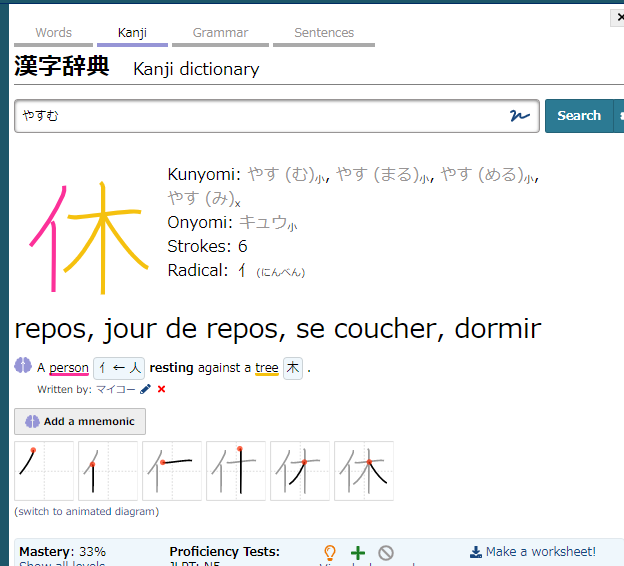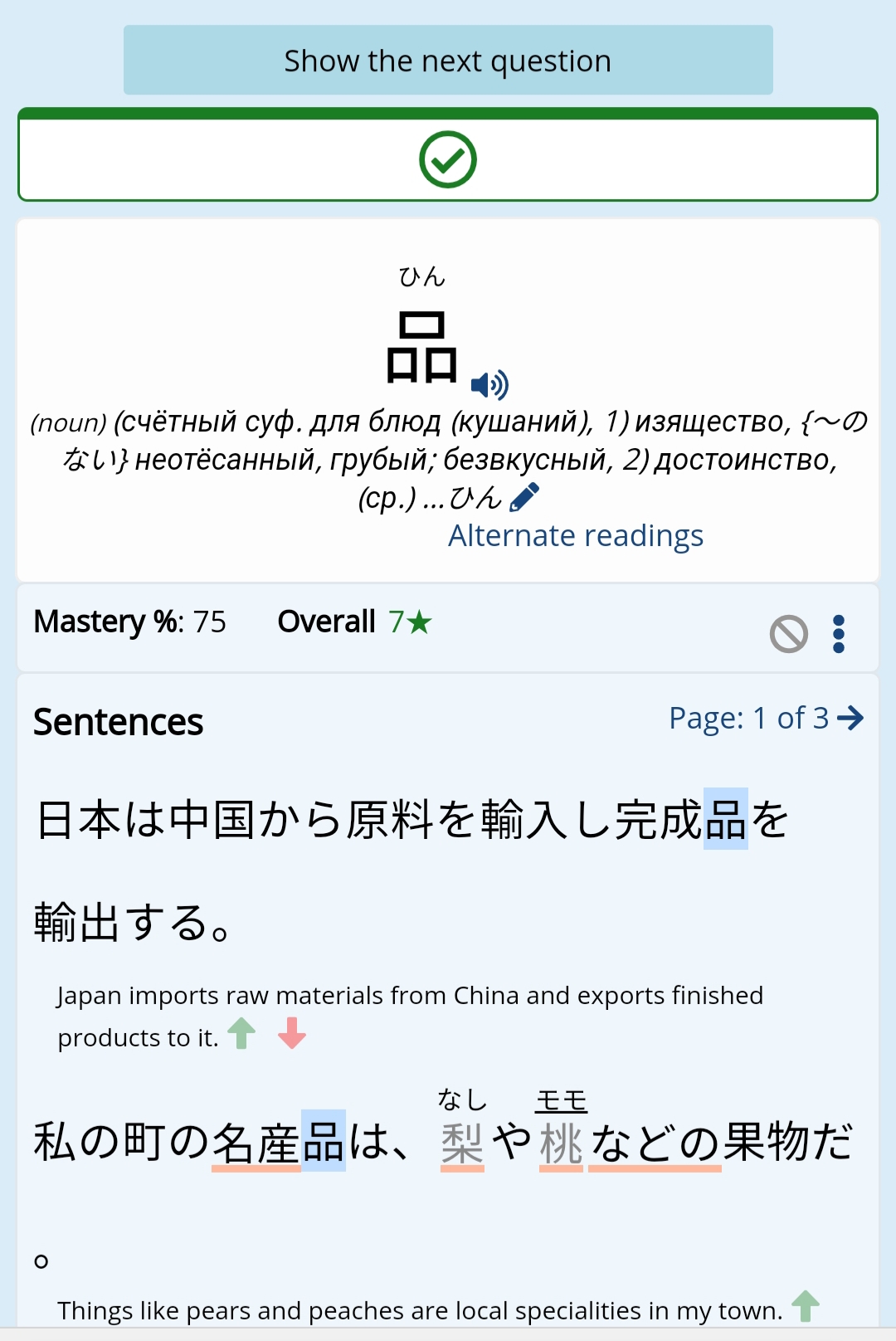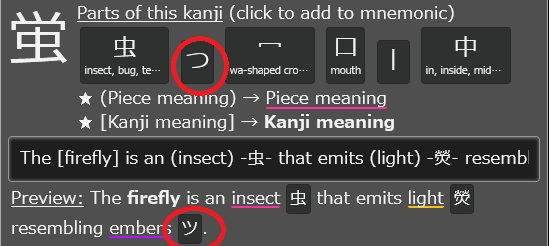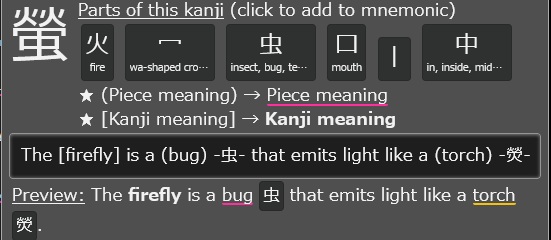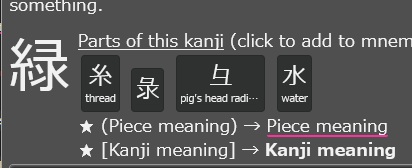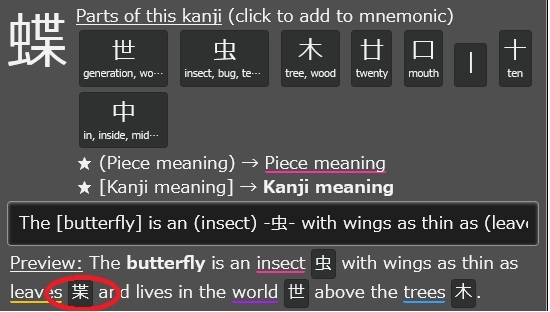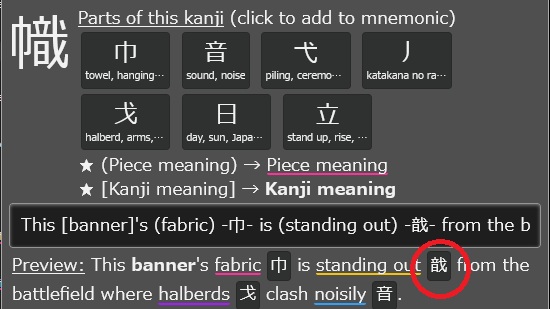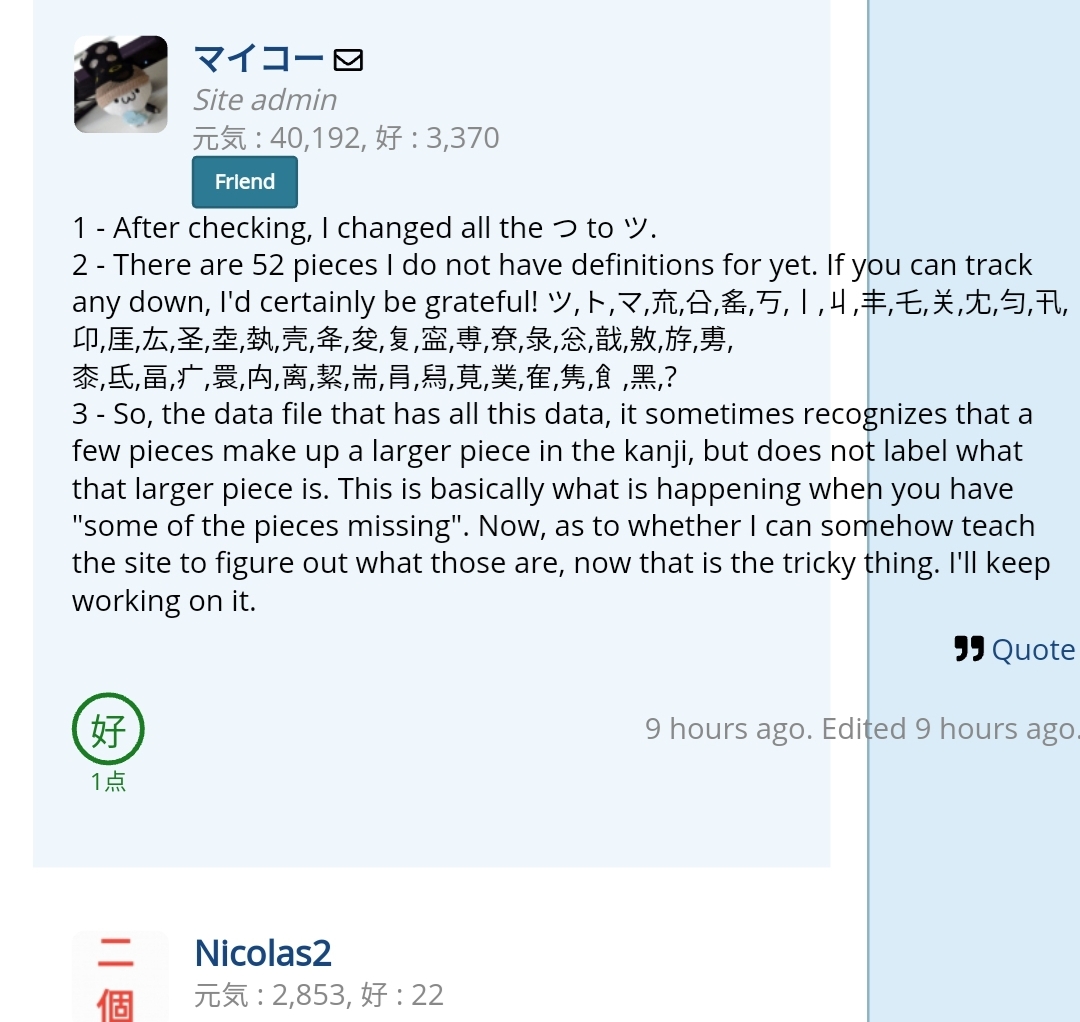1 - After checking, I changed all the つ to ツ.
2 - There are 52 pieces I do not have definitions for yet. If you can track any down, I'd certainly be grateful! ツ,ト,マ,㐬,㕣,䍃,丂,丨,丩,丰,乇,关,冘,匀,卂,卬,厓,厷,圣,坴,埶,壳,夅,夋,复,寍,尃,尞,彔,忩,戠,敫,斿,旉,
桼,氐,畐,疒,睘,禸,离,絜,耑,肙,舄,莧,菐,隺,隽,飠,黑,?
3 - So, the data file that has all this data, it sometimes recognizes that a few pieces make up a larger piece in the kanji, but does not label what that larger piece is. This is basically what is happening when you have "some of the pieces missing". Now, as to whether I can somehow teach the site to figure out what those are, now that is the tricky thing. I'll keep working on it.
